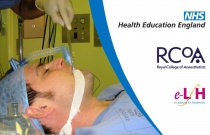Anatomy of the Wrist (Paediatric) - Radiology
Paul O'Riordan
0.50 Hours
This session will focus on the anatomy and bone development of the wrist.
Anatomy of the Knee, Tibia and Fibula (Paediatric) - Radiology
Claire Giles
0.50 Hours
This session will focus on the anatomy and bone development of the knee, the tibia and the fibula.
Anatomy of the Skull and Facial Bones (Paediatric) - Radiology
Dorothy Keane
0.50 Hours
This session will focus on the anatomy and bone development of the skull and facial bones.
Definition and Mechanisms of Underlying Pain
Lyn Margetts and Nancy Cox
This session begins by defining the key terms used in the diagnosis and management of pain. The different types of pain are then described. The basic anatomy and physiology involved in pain transmission is explained as understanding this will help you to manage pain appropriately. Important note - any drug doses mentioned in....
Diagnosing Bacterial Vaginosis
Frances Keane and Mona Malek
0.50 Hours
This session explains how to diagnose bacterial vaginosis (BV), the testing procedures and equipment used.
Diagnosing Viral Hepatitis
Gary Brook
0.50 Hours
This session explains how hepatitis A-E should be diagnosed. It describes sampling and diagnostic tests. The timescale between exposure and tests for hepatitis becoming positive is discussed, as is the interpretation of test results after treatment.
Bleeding Problems in Early Pregnancy
Christopher Guyer and Tatjana Nikisina
0.50 Hours
This session will look at the common causes of bleeding in the first trimester of pregnancy.
Benefits and Risks of Advance Care Planning to Patients, Families and Staff
Shaun Kinghorn
0.50 Hours
This session focuses on the benefits and risks associated with implementing advance care planning within an end of life care context. This session was reviewed by Christina Faull and last updated in April 2015.
Checklists, Briefing and Debriefing - ICM
Ian Hunter
0.50 Hours
This session describes the rationale behind the use of checklists in the intensive care unit and how best to implement them. It also describes the principles of effective briefing and debriefing.
Poisoning
Suneeta Teckchandani MBBS, MRCP, MRCP
0.50 Hours
This session deals with management of poisonings, initially reviewing acute poisonings as a whole and general measures in managing them, before looking at some important examples of poisonings and their specific management.
Other Signs of Cocaine Use
David Wood
0.25 Hours
This session reviews the signs and symptoms associated with cocaine use.
Post Extubation Airway Difficulties - Anesthesiology
A. Krishnamurthy
Post extubation airway difficulties occur relatively frequently. These have the potential to cause morbidity and mortality, especially if managed poorly. The aim of this session is to recognize and manage airway complications that may occur following extubation.
Chest X-ray Interpretation In ICU - Anesthesiology
Rajkumar Rajendram
This session will describe how to interpret chest x-rays in critically ill patients. We will cover the assessment of the technical quality of chest x-rays and a systematic approach to their interpretation. Examples of the radiographic appearances of some common pathologies and tubes are included.
Postoperative Fluid Management and Antiemetic Therapy - Anesthesiology
Lee Fisher and Alison Carr
0.50 Hours
This session describes postoperative fluid management in children and the clinical response to specific conditions which may arise.
Renal Function - Anesthesiology
Irwin Foo
This session outlines the age-related changes in the kidney, the effects of ageing on osmoregulation, sodium and potassium homeostasis and the impact of the ageing kidney on the actions of drugs used in the perioperative period.
Overview of Routine Asthma Monitoring in Children
Viv Marsh
0.50 Hours
This session provides an overview of the purpose of routine monitoring of asthma in children, highlighting its importance and benefits to patients and the NHS. The structured asthma review will be explored with a particular focus on the assessment of control and common reasons for poor asthma control.
Pharmacological and Non-Pharmacological Management of Asthma in Children
Viv Marsh
0.50 Hours
This session provides an introduction to the pharmacological and non-pharmacological therapeutic options for the management of asthma in children. As a long-term medical condition ongoing management is the key to control and patient safety.
Anatomy and Physiology of the Balance Organs
Elfh
This session describes the anatomy of the balance organs in the inner ear (the vestibular system). Also covered is the mechanism whereby the otolithic organs and semicircular canals provide neural input on movement and the sense of balance.
Painful Osteoporosis Vertebroplasty
David Wilson
0.50 Hours
This session covers the indications for percutaneous vertebroplasty, the basic methods, the risks and precautions that should be taken and the chances of success.
Chronic Wrist Pain Hx Trauma
Waqar Bhatti and Richard Whitehouse
0.50 Hours
This session describes how to interpret the imaging findings in patients with chronic wrist pain and advise upon further investigation.
Common Clinical Problems: Acute Intestinal Haemorrhage
Chris Hay, Nathan Manghat and Simon Jackson
0.50 Hours
This session covers the imaging modalities available in the investigation of acute gastro-intestinal (GI) haemorrhage and their indications.
Common Clinical Problems: Jaundice
Dafydd Richards
0.50 Hours
This session provides an overview of jaundice from the radiologist’s perspective. It includes a discussion of the basic science of bilirubin, the classification of jaundice's multiple causes, the spectrum of imaging investigations available and an algorithm for investigation.
Other Pancreatic Neoplasms
David Scullion
0.50 Hours
This session discusses the less common pancreatic tumours, both benign and malignant.
Breast Pain and Inflammation
Sue Barter
0.50 Hours
This session has been developed to help you understand the imaging and management of conditions which present with breast pain and inflammation.
Anatomy of the Adrenal Gland
Dr Sheila Rankin
0.50 Hours
This session will cover the normal anatomy and physiology of the adrenal gland and its appearance on magnetic resonance imaging (MRI), computed tomography (CT) and ultrasound.
























